Oaxaca is a special place, and there is no better way to enjoy it than to journey out to a palenque (distillery) to see how mezcal is made first hand. Many years ago, when I first began touring palenques I was under the illusion that I was going out there just to see how mezcal was made. I thought I was going to see the agave fields, the earthen roasting pits, the horse drawn stone grinding mill, the fermentation tanks, the copper or clay pot stills, and the many other things that are involved in the ultimate arrival of this magical elixir. Basically, I thought it was all about the mechanics of making mezcal.
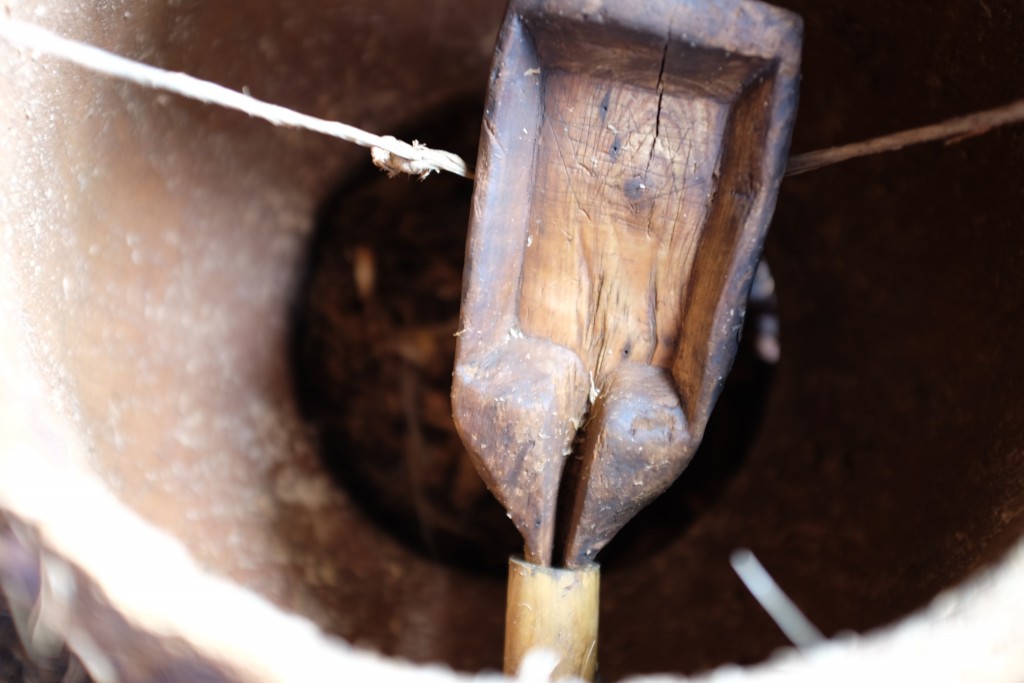
It took me awhile to figure it out, but now I know that the mechanics of making mezcal are only one slice of a palenque tour. What am I talking about? What else could there be? Well, as I said it did not hit me right away. But the more time I spent with mezcaleros and mezcaleras (female mezcaleros as I recently learned), I began to understand that they were not just sharing the process of mezcal production, but they were sharing their family history, their culture, their generational passion, their life.
Mezcal is so much more to these traditional producers. From the time most of them were small children, they have been around the palenque, sat with their fathers, mothers, aunts, cousins, uncles and grandparents, and absorbed all there is to know about making mezcal. For these producers, mezcal is the center of their world – it is their past, present and future. Mezcal is revered and core to who they are. It is present at every major milestone of their lives: births, communions, weddings, funerals, and everything in between.
So when you are lucky enough to be invited into their world, you eventually understand that mezcal is so much more than cutting, baking, fermenting and distilling. It is with an immense source of pride, passion and knowledge that they bring you into their inner circle.
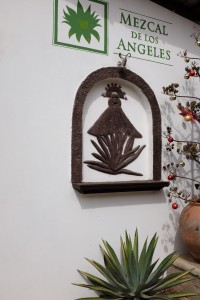
And so it was on my recent trip to Oaxaca that my friends and I were invited into the sanctuary of the palenque at Real Minero. William Scanlan of Heavy Metl Premium Imports, who imports Real Minero in the U.S., knew I was dying to see this highly regarded producer for myself so he generously arranged our visit.
We arrived at the well-kept little town of Santa Catarina Minas, the heart of a historic mezcal making region. I’ve been told that all mezcal is made in clay pots in Santa Catarina Minas, as this is their tradition. I cannot verify if this is 100% true (maybe there is a copper pot rebel up in their hills), but if so, it’s awesome that this tradition has been kept so vibrant.
Real Minero is a storied mezcal brand from a 4th generation mezcal family. These days, the brand is being run by Graciela Angeles Carreño, the great granddaughter of the brand’s founder, or it could be the great great granddaughter, or the great great great granddaughter…the thing is they really don’t know how far back it goes. Many of these longtime mezcal-making families lose the trail as they backtrack the family tree into the 1800’s, and so it is with Real Minero. All they know is that there is 100+ years of mezcal making in their family. Love it!
While Graciella is a “Master Mezcalera” herself, her father Lorenzo Angeles Mendoza is also at the heart of their mezcal making these days. I put the term “Master Mezcalera” (same thing with “Master Mezcalero”) in quotes because Graciella explained that this term is all marketing. She said it did not really even exist until about 10yrs ago when mezcal started gaining popularity. Before that, you just made mezcal. Now you are labeled a “master” for simply doing what you have always done – making great mezcal in her case!
Graciella gave us a full tour of the Real Minero palenque. We started at their very modern warehouse which had surrounding agave fields with various varietals at different stages of development. The warehouse was quite large and spotless with an office and a conference room up the stairs at one end. I have never seen such modern facilities at a palenque – Real Minero is clearly planning for the future.
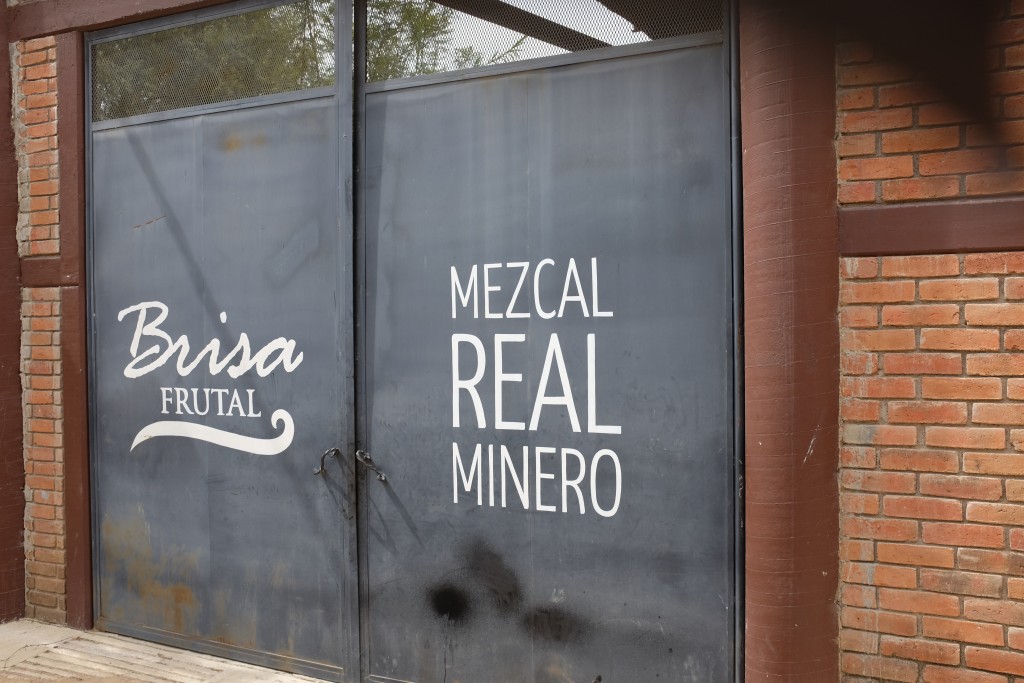
An agave field and various varietals in staggered states of maturity could be found throughout the property. There were a handful of A. karwinskii var. tripon – Real Minero makes the only mezcal I have seen with the tripon varietal. The one expression they have had in the states for years is an ensemble of four agaves, though now Metl is bringing in their whole amazing line of varietals. I asked Graciella if they made a single expression tripon, and she said they did and that the might have a few for purchase (but good luck finding it in the U.S.!). Now, I would just have to beat my buddies to it….
The agave fields held some beauties (if you like this kind of thing, which clearly I do) with huge towering arroquenos and quite a few varieties of Agave karwinskii nearing maturity. There was also an Agave rhodacantha, best known for the varietal mexicano (also known as dobadaan). Graciella explained that this rhodacantha was a cuixe varietal. I have only known a cuixe as an A. karwinskii, so this was a new agave varietal for me. Yes, I was truly psyched! As we walked the property, Graciella provided other little tidbits.
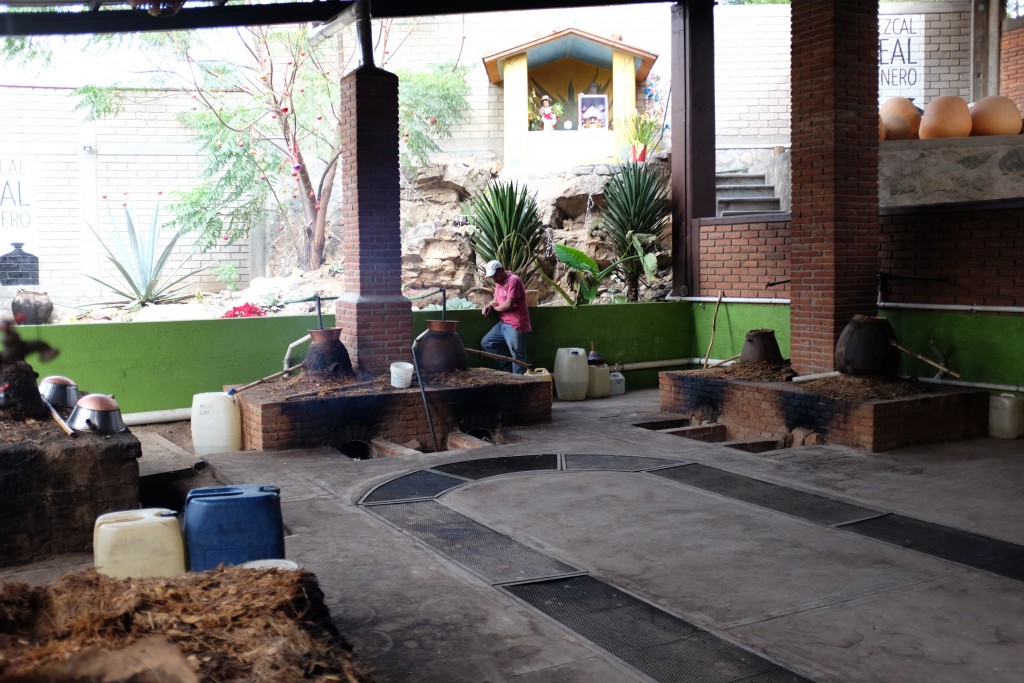
For example, she said that sometimes you will find rocks in the middle of a mature agave. Why? Because as the quiote starts to sprout, and if the agave is large enough (like an arroqueno), one cannot get to the middle of the agave to cut off the quiote. The quiote is cut off to keep the sugars and energy of the agave concentrated in the pina. So if an agave farmer cannot reach the quiote to cut it off, they throw rocks at it to break it! I thought she was pulling our leg, but no, it is true. More cool stuff for a mezcal nerd!
We left the fields and the warehouse and made our way to where the Real Minero distills their mezcal. Again, it was the cleanest, most well-organized palenque I have seen. Nothing was out of place. No stray equipment or tools. You could practically eat off the brick and cement floor. But it was not an industrial setting. Just a great looking, well kept gorgeous palenque. They not were roasting or crushing agave at this time, but they were distilling. They had eight clay pot stills, of which four were in the midst of distillation. My mouth started watering as Graciella pulled out a large gourd bowl and began filling it from one of the stills. Still warm from the still, she passed around a scrumptious 50% ABV tobala.
I am not sure there is anything better on the planet than tasting a great artisanal mezcal, right off the still, from one of the world’s renowned agave spirits producers. And we tasted. And tasted. And tasted some more. Not that is wasn’t already, but soon enough, everything was REALLY right with the world.
In a room adjacent to the stills, Graciella showed us a room with perhaps 50 huge glass containers in which they have been aging mezcal for over ten years! With the coming changes to the mezcal NOM, “aged in glass” will be a category unto itself. You may ask if aging in glass actually does anything to the mezcal? I have not tasted many so I am by no means an expert, but people in the mezcal world absolutely revere mezcals that have been aged in glass for many years. It smooths and mellows the mezcal. You will find it to be richer with greater depth and character. That certainly has been my experience, and though Graciella could not tell us when her glass-aged mezcal would hit the market, I would like to be first in line when it does.
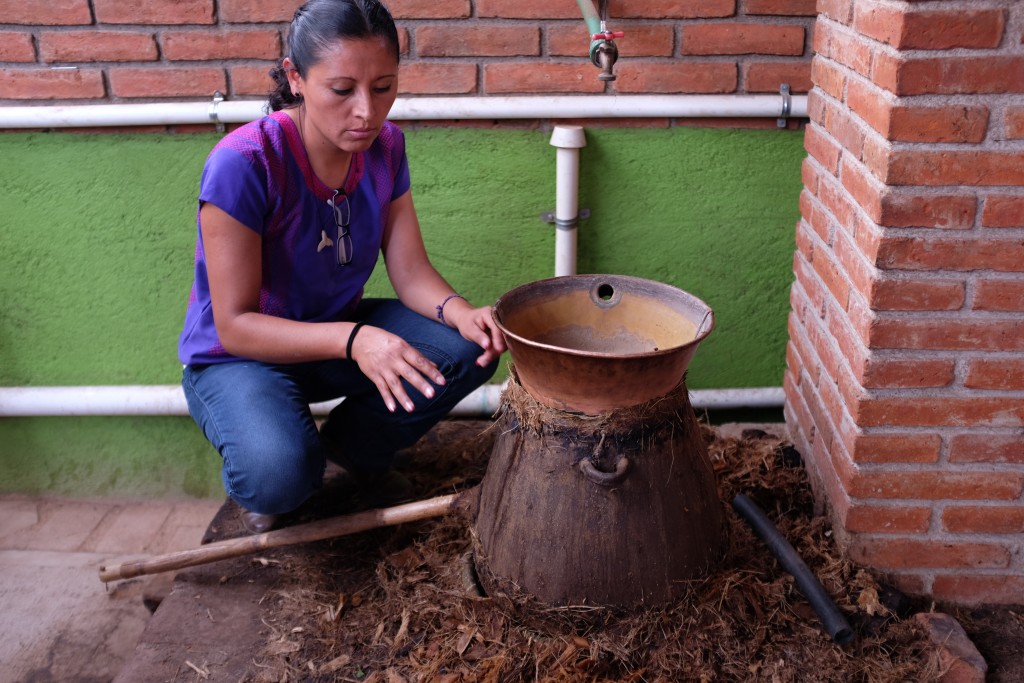
After my friends stopped me from asking even more questions (were a few hundred too many?), we made our way back to the warehouse and Graciella treated us to a grand tasting of all Real Minero offerings. OMG! Find them. Buy them. Drink them. Happily, as I mentioned, most of these can now be found in the U.S., and they are amazing. The mezcal-y wizardry of the many generations of the Angeles family is poured into every bottle. These are truly great mezcals by any measure, all clay pot distilled, and each one lives up to the family’s reputation. Naturally, my friend’s and I bought as much as we could carry (and then some).
By now it was after 3pm, we were feeling good, and we were starving – which by the way, is almost what always happens when you are touring palenques in Oaxaca. Important safety tip: eat a big breakfast and bring protein bars! Graciella invited us to lunch at her local. As we drank beer and ate great food, I reflected on a special day at one of the more amazing palenques I am likely to ever see.
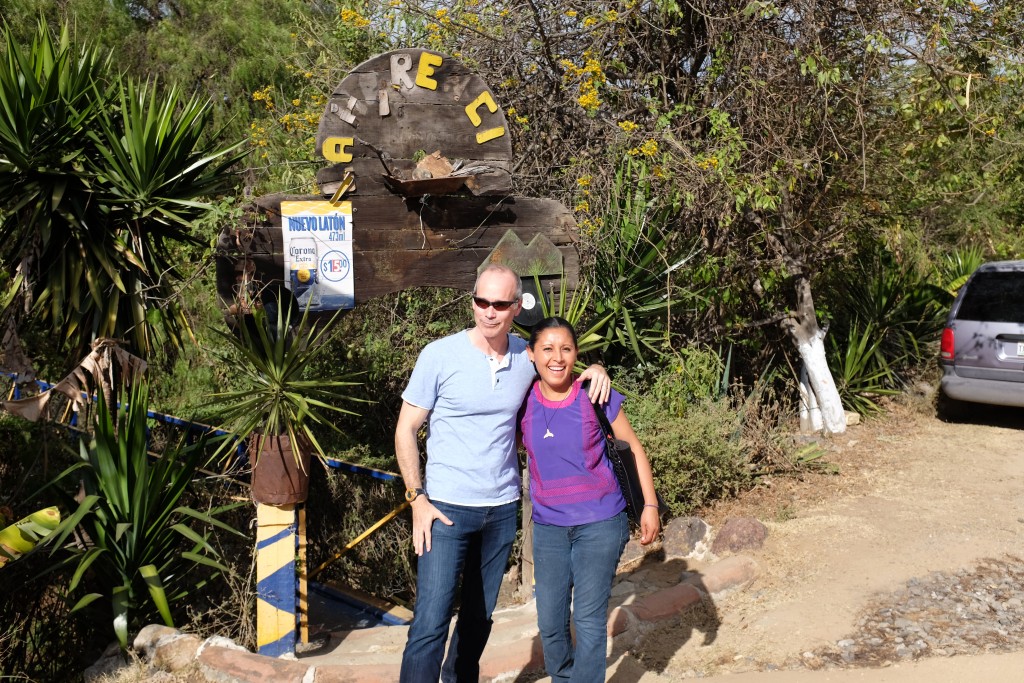
Graciella, thanks for a fantastic experience! Until next time, drink mezcal!


Heading back for my second trip to the State of Oaxaca….thinking of living there part time….but surely want to buy some quality mezcal when in the State….Just bought the Mezcal PhD’s book…and also asked him for some “recommendations ” of plenques to visit and mezcal to purchase….I am a “adventurer” so love to find out of the way, unique spots when I travel, which I frequently do….
[…] Tepextate, yummy. Mezcalosfera by Mezcaloteca, second US release; I must have this in my cabinet! Real Minero Ensemble, agave Espadin, Largo, Tripon & Barril, clay distillation, 10 years rested in glass; […]
” It is present at every major milestone of their lives: births, communions, weddings, funerals, and everything in between”
I don’t agree, look at http://www.sporttechie.com/2016/09/07/sports/nfl/seattle-seahawks-earl-thomas-signs-equity-deal-with-chefs-cut-real-jerky/
That’s funny! Keeping in mind that I don’t think Earl Thomas is Mexican, and I doubt mezcal has ever recognize HIS rights of passage!
Actually, there is more obvious support that it is a karwinskii, so of course you are correct….I was looking at the agave identity/map supplement from the Artes de Mexico (#98) and cuixe is listed under rodacantha, not under the long list of karwinskiis, hence the dangling question mark. So now I am curious if it a cultural/locational overlap in identification, like lechuguilla or cenizo. Could Graciella’s drift refer to the fact that both A. Rodacantha & A. Karwinskii are related under the species Rigidea? (my only guess.)
Doc,
Sounds like a fun and informative trip. Do you speak fluent Spanish?
I age my own Mescal and Tequila, sometimes Bacanora and Sotol. Sotol is especially delicious either glass-aged or mellowed via oak barrel. I use the three main, popular oak types: American, French and Hungarian. They all impart their own delightful mellowing and flavour characteristics. I’m merely a hobbyist, not a company. However, over the years my results produce the best tasting product I have yet had. Keep in mind, I also respect and equally appreciate enjoying the pure, unadulterated spirit in its clearest, cleanest form as a unique flavour experience.
Agave spirits evolution have followed suit with the addition of the now common Añejo iteration, and more recently Extra Añejo and now Ultra Añejo, some at astonishing price points. Hornitos “Black Barrel” is a recent marketing example of a mid-priced, Bourbon barrel aged Tequila. Just like surfing took off in the 1960s, so agave spirits, Tequila, et al, have blossomed in the 2000s with the Margarita now reputed to be the most popular mixed drink in America. Some upscale restaurants now offer mixed drinks using expensive Mescal, a trend with momentum.
There are approximately 250 species of Agave at last count, no one really knows for sure. There is actually a treatise catalog of this in the library of the NOM, etc.
Don Antonio Aguilar is actually a fairly decent Mescal made from the Weber Blue Agave, typically only used for Tequila. Spirits from Mexico? It’s actually anybody’s game out there now, what with the skyrocketing popularity of anything “spiritual” from Mexico over the last decade, especially the last five years. Es sin precedente. Mexican agave spirits in the 1960’s in the USA were relegated to mostly kerosene flavored mixto refuse, with some minor exception. Nowadays, most large package stores have a dedicated Tequila section, many with a locked case containing rare and expensive Agave spirits. Seems every other guy on the internet is now a self-proclaimed Tequila expert, be it armchair or otherwise. Its an interesting observation in trend and personal development how self-worth and adequacy are achieved through the various adoptions and adaptations of that perceived as cool, trendy, together, creative, hip and awesome. At least Doc here, has been there and contributes something to the field he so obviously enjoys. Yo, Doc – me to!
Thanks for the long response. Sadly, I speak little Spanish but I am always there with people who are fluent so it works. I would love to try some of your home aging! Let’s work out a deal!
Yes, there are well north of 200 species of agave, but as I am sure you know, most do not have enough starch/sugars to be able to turn it into alcohol. I spend a lot of time in my book discussing how many varietals you can make mezcal from. My conclusion is around 50 but very tough to pin down! Great fun to pursue though!
And by no means am I a self-proclaimed expert. There are many people that know way more about mezcal than me, but I am passionate and so much so that I wrote a book about it! I love and believe in this spirit and know the more people learn about it, the more they will figure it out and drink it. So I try to spread the gospel and educate. Based on the enthusiastic responses I routinely get, I think it is working! Viva mezcal!
Hi Jerry, could you plz contact me? I’m looking for a used mezcal barrel and just read your godsent message. 🙂
Shineonme7@hotmail.com
Gracias!
Thank you for sharing a bit of your mezcal adventure!
Felicidades! Great article, love the mezcales, hope some day to come to Oaxaca too!
Best,
Geoff
Sub species Bicuixe & Madrecuixe are always A. Karwinski; Cuixe has always been a Rodacantha, right?
Not to my knowledge. I had known cuixe as a karwinskii. But it sounds like you know more than me! Do you know if the Rey Campero Cuixe is a karwinskii or a rhodacantha?